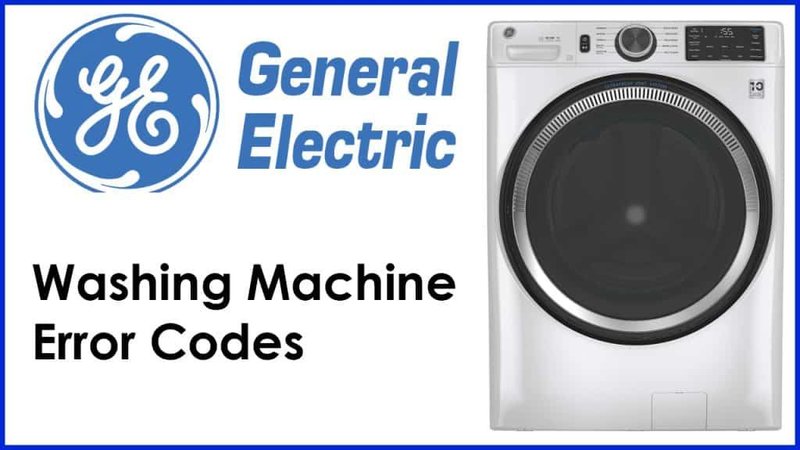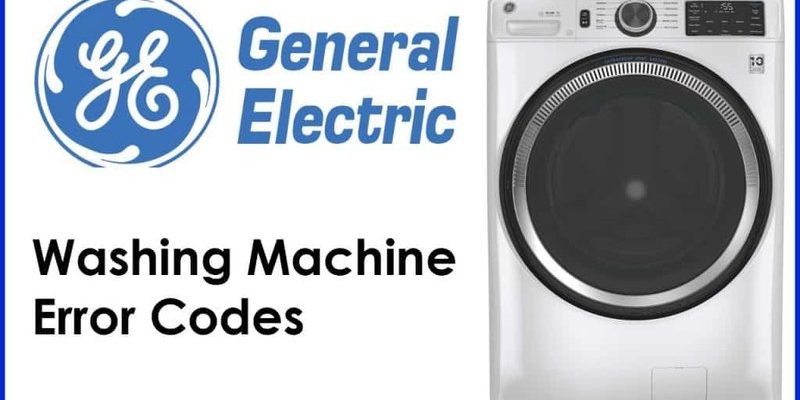
So, what’s the deal with the “LE” error? In the realm of washing machines, this code often signifies a problem with the motor, specifically a load error. It’s the machine’s way of telling you that something’s not quite right. Think of it like your car’s check engine light; it doesn’t mean you need to stop driving immediately, but it does suggest that you shouldn’t ignore it either. The key lies in understanding what the error means and how it affects the safety and functionality of your GE washing machine.
Understanding the “LE” Error Code
To break it down simply, the “LE” error code in GE washing machines generally relates to a motor issue, often due to an overload or an imbalance within the drum. Imagine trying to carry an overly stuffed backpack — it might cause you to stumble or tip. Similarly, the washing machine’s motor struggles when overloaded, leading to the “LE” error message. This is the machine’s way of alerting you that it needs a bit of help balancing the load to function properly.
In some cases, the “LE” error might appear due to minor glitches, such as a momentary power disruption or even if the drum is slightly off-center. Interestingly, just like how a quick nap refreshes us, resetting the washing machine can sometimes clear the error. Power down the machine for a minute, restart it, and see if the error vanishes. If it persists, it’s time to dig a little deeper into possible causes.
You might be wondering why the balance of a load is such a big deal. An unbalanced load causes the machine to wobble, which can lead to excessive vibrations. This isn’t just noisy and annoying — it can also cause wear and tear on the machine itself. Over time, these vibrations might lead to more significant mechanical issues, turning a small error into a costly repair.
Is It Safe to Use the Machine with an “LE” Error?
Here’s the ultimate question: is it safe to keep using your GE washing machine when it displays this “LE” error code? The short answer is — it depends. If the error code appears only occasionally and seems to clear after adjusting the load or resetting the machine, then it may not pose a significant risk. However, if the error is consistent, it’s best to take it seriously and investigate further to prevent potential damage.
Ignoring persistent “LE” errors is a bit like ignoring the signs of a cold; it might start with a little sniffle, but if left unchecked, it could lead to a bigger issue. Continuing to use the washer without addressing the problem could exacerbate the motor issue, leading to more severe and costly repairs in the future. Taking action early can prevent such outcomes.
So, what can you do? Start by rebalancing and evenly distributing the laundry. Check if there are items that could be tangled or causing an imbalance. Eliminate this possibility by redistributing your clothes, as awkward or heavy items like jeans or towels can sometimes get clumped together. If this doesn’t resolve the issue, it might be time to consult the manual or contact a professional for a more detailed diagnosis.
Common Causes and Troubleshooting Tips
Why does the “LE” error happen in the first place? Based on user experiences, a few common culprits emerge. Overloading is one of them. Picture stuffing too many groceries into a bag; at some point, it’s going to give way. Similarly, when too many clothes are crammed into the drum, the motor struggles to turn, resulting in that “LE” error. Another frequent cause is an imbalanced load, where heavy or large items are causing the drum to spin unevenly.
Aside from these, sometimes the problem lies in the connection or wiring to the motor. Picture a loose plug that causes your lamp to flicker — it’s similar here. Any disconnection or looseness in the motor wiring could trigger an “LE” alert. In such cases, a qualified technician’s inspection might be necessary to avoid further complications.
But don’t despair! Often, simple troubleshooting steps can resolve these issues. Try reducing the load size, ensuring items are evenly distributed. If these steps don’t rectify the problem, unplugging the machine for a few minutes can act as a reset. This simple action often allows the system to recalibrate when it’s powered on again, clearing intermittent faults.
Preventative Measures to Avoid Future Errors
You’re probably thinking, “How can I avoid dealing with this error again?” Maintaining your washing machine properly is akin to maintaining your car with regular check-ups. Prevention is key. First, always follow the manufacturer’s load recommendations. This helps ensure that your machine operates within its designed limits, reducing the risk of wear and tear on the motor.
Regularly check for tangled clothes or foreign objects that might disrupt the drum’s balance. It’s also wise to keep an ear out for any unusual sounds or excessive vibrations during cycles. Like a creaky floorboard, these noises can be an early warning sign that something’s amiss.
In addition, routine cleaning and maintenance can extend the life of your appliance. This includes inspecting hoses and ensuring the drum is free from residues that might affect performance. Implementing these habits into your laundry routine can save you from the hassle of unexpected error codes and keep your washing machine running smoothly for years to come.
In conclusion, while an “LE” error code on your GE washing machine might seem daunting, understanding its implications and addressing it promptly ensures both peace of mind and prolonged appliance life. Taking proactive steps not only keeps your laundry routine seamless but also protects your investment in the long run.
